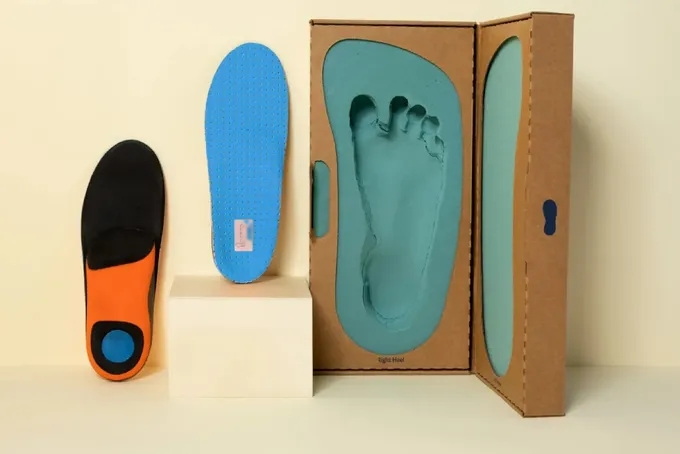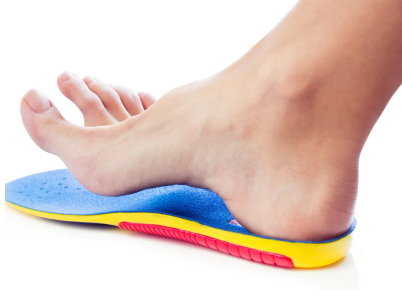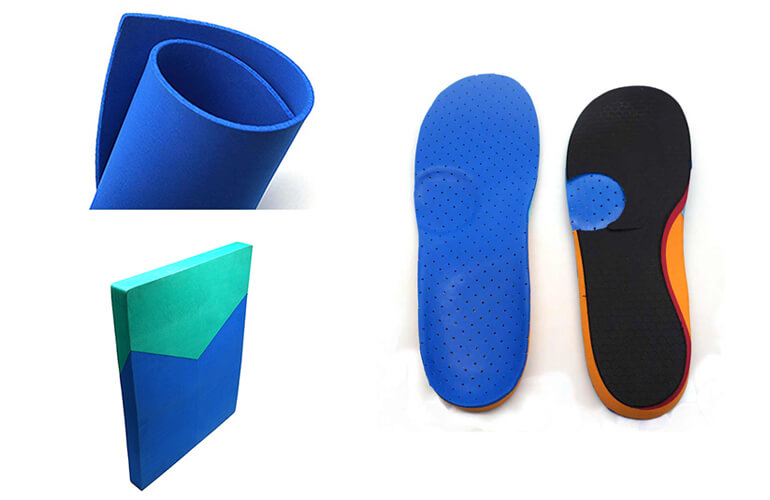










Orthotic insoles are a key solution for alleviating discomfort and correcting biomechanics in individuals facing foot, joint, or lower back pain. For international brands and private labels sourcing from Chinese OEM manufacturers, understanding the entire process of orthotic insole production—blending craftsmanship, digital innovation, and material science—is essential for quality assurance and product performance.

Orthotic insoles are specially crafted shoe inserts designed to support, align, and cushion the feet. They help redistribute pressure, correct abnormal walking patterns, and address medical issues like plantar fasciitis, flat feet, and high arches. Insoles can be customized for daily use, sports, or therapeutic support, using materials like EVA foam, PU foam, cork, polypropylene, and engineered composites for specific levels of firmness and flexibility.
Creating custom orthotics begins with an accurate assessment of the end user's foot structure. Leading manufacturers utilize technologies such as 3D foot scanning, laser measurement, and even traditional foam or plaster casting to capture intricate details of the arch, heel, and pressure points. These methods generate precise data models for CAD-based design, ensuring that every orthotic insole conforms perfectly to individual anatomy.
A precise digital scan or physical cast allows manufacturers to analyze a user's gait, identify biomechanical discrepancies, and design corrective orthotics tailored for each client.
Once foot data is collected, the design process advances using computer-aided design (CAD) software. The orthotic is virtually sculpted to:
- Adjust arch heights for optimal support
- Raise or lower heel cups for stability
- Create metatarsal pads or forefoot relief zones
Engineers and clinicians collaborate on prototyping by evaluating digital models, running virtual stress tests, and refining corrective features for comfort and medical efficacy.
Prototype insoles are often tested with gait analysis systems to verify their performance in dynamic walking or running simulations, ensuring biomechanical alignment.
The choice of materials is critical to orthotic effectiveness, durability, and comfort:
- Base layer materials: Semi-rigid thermoplastic polyurethane (TPU), cork, nylon, or polypropylene for core stability
- Middle cushioning layer: EVA foam, PU foam, or Poron for shock absorption and adaptive support
- Top cover: Breathable antimicrobial mesh, velvet, fabric, or genuine leather for hygiene and moisture control
Material blends vary according to end use—sports insoles prefer impact resistance and sweat absorption, while diabetic orthotics require moderate firmness and pathogen protection.
Manufacturers use both automated and manual technologies to shape insoles according to digital blueprints:
- Die cutting: Standard steel-rule dies slice flat foam sheets into common sizes
- CNC milling: Precision carving of custom insoles from blocks of EVA, PU, or cork, based on scanned models
- Laser cutting: Creates detailed contouring, ventilation holes, and edge perforations
CNC milling parameters—such as surface hardness and fit tolerance—are optimized to achieve superior comfort and support, especially for sensitive users like diabetics or athletes.
Assembling orthotic insoles involves joining multiple layers into a single composite structure:
- Heat molding: Thermoplastic shells are softened under controlled heat and vacuum formed over positive foot molds. This step ensures a true custom fit.
- Adhesive lamination: High-strength adhesives bond foam and fabric layers, ensuring durability through repeated wear.
- Edge sealing and finishing: Rounded edges and seamless transitions are created by grinding and skiving, minimizing friction against the shoe or foot.
Brand logos, size markings, or anti-slip coatings may be added for private label requirements. High-volume OEM factories employ automated presses and precision bonding tools for consistency across batches.
Before shipping, each orthotic insole undergoes thorough quality inspection:
- Alignment of arch and support zones is verified according to order specifications
- Bond strength and material integrity are tested for daily wear resistance
- Surface smoothness and absence of rough edges are checked manually
Finishing touches may include embossing logos, adding anti-bacterial coatings, and UV sterilization to protect product hygiene. Brands benefit from tailored packaging, private labeling, and scalable order fulfillment from well-equipped Chinese suppliers.
Modern orthotic production increasingly uses 3D printing, enabling on-demand customization and rapid prototyping. Flexible materials like TPU and lattice structures yield ultra-precise, lightweight insoles for specialized use.
After delivery, wear-molding helps the orthotic naturally conform to the user's unique foot shape. Starting with short wear periods and gradually increasing duration allows optimal adaption for enhanced comfort.

Orthotic insoles, even those made from the highest quality materials, require regular maintenance to preserve support and hygiene:
- Wash with mild soap and water only—avoid machine washing or heat drying
- Air dry fully before reinserting into shoes
- Replace every 12 to 18 months or when padding flattens and support diminishes
Professional suppliers also provide services like top cover replacement or refurbishment, extending the total lifespan of the product.
Chinese factories excel in precision engineering, mass production, and strict quality control. Their capabilities extend to:
- Meeting international certifications (FDA, CE, ISO 13485)
- Offering private branding and customized packaging
- Providing scalable solutions for wholesalers, distributors, and global brands
- Supporting bulk orders without sacrificing consistency
When sourcing orthotic insoles, select manufacturers with advanced R&D, in-house biomechanical expertise, and proven supply chain reliability. Such partnerships ensure your product meets clinical standards and market expectations.
Making orthotic insoles demands accuracy at every stage—from foot measurement and digital modeling to material selection, advanced cutting, assembly, and rigorous quality control. OEM manufacturers in China utilize state-of-the-art technology and skilled craftsmanship to fulfill the diverse needs of international clients. By understanding the manufacturing process, maintenance requirements, and supply chain best practices, footwear brands and distributors can deliver effective, high-quality orthotic solutions worldwide, enhancing comfort and health for every user.

Custom orthotics usually require 3 to 7 days for completion, including digital scanning, design, prototype testing, and final manufacturing.
DIY solutions exist but generally lack professional precision, customization, and medical-grade materials. For reliable support and injury prevention, opt for professionally manufactured orthotics.
EVA foam is preferred for daily use due to its flexibility, cushioning, and shock absorption; for corrective support or athletic application, semi-rigid thermoplastics or carbon fiber may be ideal.
Wash with warm water and gentle soap, avoiding excessive heat or machine cycles. Air dry fully before reusing to retain shape and hygiene.
Replace every 12 to 18 months, or sooner if visible wear, compressing, or loss of support is observed.